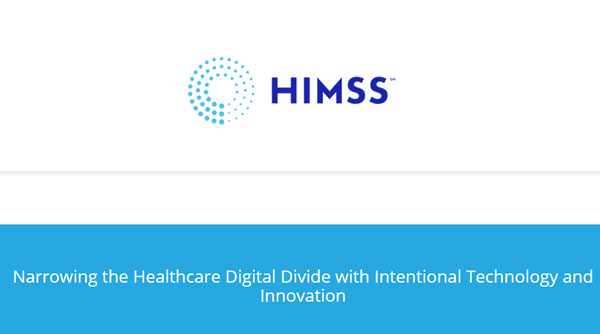Narrowing the Healthcare Digital Divide
In the last few years, the healthcare IT industry has driven the concept of digital transformation as the most efficient and effective way to deliver better patient care, outcomes and experience in and outside of the healthcare organization. Patient information gathered from cloud-based wearables, mobile technology, telehealth, and other innovative technologies enables healthcare providers and patients to access their information conveniently and in real time to support care coordination across the care continuum.
As in other industries, however, the march to digital transformation has only put a harsh spotlight on the digital divide in healthcare. Socio-economically disadvantaged and rural communities often lack the required technology and connectivity to access their medical information, which negates their ability to actively engage in their healthcare. Indeed, according to the Pew Research Center, nearly 1 in 8 Americans lives in poverty, with low-income individuals having lower rates of smartphone ownership (71%), home broadband access (59%), Internet use (82%), and basic digital literacy (53%).1, 2, 3 Furthermore, at least 1 in 4 Americans likely do not have digital literacy skills or access to Internet-enabled digital devices to engage in telehealth visits.2, 3 With these disparities in place, the ability of patients to access their information and participate and collaborate as part of the whole care team is further impeded.
This webinar looks at how technology and innovation – when implemented intentionally and with these communities in mind – can bring all providers and patients together and make the positive impact to patient care that was originally intended.
At the conclusion of this webinar, attendees will learn how to help bridge the digital divide:
- Enhancing the entire care team experience, especially for vulnerable patient populations
- Enabling strategies for access to patient data anywhere
- Empowering patients to take control of their wellness and treatment plans
References:
1. San Francisco Digital Equity. Digital Equity. San Francisco Mayor’s Office of Housing and Community Development. City and County of San Francisco. 2018. Accessed April 6, 2020. https://sfmohcd.org/digital-equity.
2. Pew Research Center. Demographics of Mobile Device Ownership and Adoption in the United States. 2018. Accessed April 6, 2020. http://www.pewinternet.org/fact-sheet/mobile/.
3. Pew Research Center. Demographics of Internet and Home Broadband Usage in the United States. 2019. Accessed April 2, 2020. http://www.pewinternet.org/fact-sheet/internet-broadband/.


Did you find this content informative and useful?


